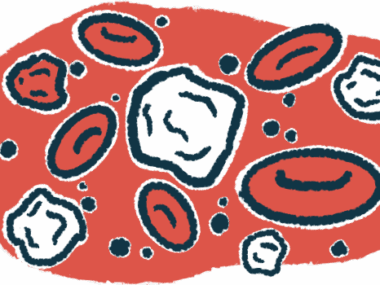PSMC6 Gene May Drive Inflammation in Primary Sjögren’s, Study Finds
Gene also linked to immune cell infiltration into glands
Written by |

A gene called PSMC6 may be involved in driving inflammation and immune cell infiltration into the glands affected by primary Sjögren’s syndrome (pSS), a study found.
PSMC6, which was more highly expressed, or active, in the blood of pSS patients than in that of healthy people, also was linked to lower numbers of T-regulatory cells (Tregs), which normally work to tone down immune cell activity.
In a mouse model of Sjögren’s, silencing this gene led to less inflammation and immune cell infiltration, as well as an increase in the number of Tregs.
“Collectively, PSMC6 could induce immune cell infiltration and inflammatory responses to promote the occurrence of [primary Sjögren’s syndrome], providing us with a potential therapeutic target for treating pSS,” the researchers wrote.
The study, “PSMC6 induces immune cell infiltration and inflammatory response to aggravate primary Sjögren’s syndrome,” was published in the Journal of Human Genetics.
pSS marked by immune cell infiltration into saliva and tear glands
Infiltration of a variety of immune cells into the body’s moisture-producing glands — including the salivary and lacrimal or tear-producing glands — is a key feature of pSS. In this form of Sjögren’s, no other related diseases are present.
Yet, the mechanisms that drive immune cell infiltration in Sjögren’s aren’t fully understood. According to researchers, better understanding of these mechanisms could offer insight into new treatment approaches.
To that end, a team of scientists in China aimed to better understand which genes might influence immune cell migration in the autoimmune disease. They examined genetic information from pSS patients that was housed in the Gene Expression Omnibus Database.
Specifically, these datasets looked at messenger RNA (mRNA) levels in patients’ blood samples. mRNA is an intermediate molecule formed when the information stored in DNA is being used to produce a protein. Thus, it can be used as a proxy indicator of a gene’s expression, or activity levels.
One dataset contained samples from 30 pSS patients and 30 healthy individuals. An analysis of these samples revealed a total of 51 genes that were found at different levels between the two groups.
That difference suggests these genes may be “key targets” in Sjögren’s, according to researchers.
Another type of analysis identified a group of 334 genes that might be associated with pSS.
The two analyses had 20 genes in common. Of them, most were involved in immune regulation.
The top 10 Sjögren’s-related genes were RSL24D1, HAT1, PSMC6, COMMD8, POLR2K, MRPS28, CHMP5, BCL2A1, RPL22L1, and LY96. All were expressed at high levels in pSS samples.
Additional analyses estimated the proportion of various immune cell subsets differed between the pSS patients and healthy people. Specifically, patients seemed to have higher proportions of memory B-cells, some types of T-cells, and activated dendritic cells. Conversely, they had a lower proportion of Tregs compared with healthy individuals.
Tregs are a type of immune cell that work to regulate the activity of other immune cell types, help dampening excessive immune and inflammatory responses.
In another dataset including 351 pSS patients, PSMC6 — one of the key genes previously found to be elevated in Sjögren’s — was negatively correlated with Tregs, meaning the higher the expression of PSMC6, the lower the abundance of Tregs.
“We speculate that PSMC6 may be involved in immune cell infiltration in pSS, and may negatively regulate the number and activity of Tregs,” the researchers wrote.
To delve deeper, the team turned to a mouse model of pSS. They found that animals had significant immune cell infiltration and inflammation in the lacrimal and salivary glands, as well as increased expression of PSMC6 in both glands and in the blood.
When PSMC6 was experimentally silenced, immune cell infiltration and inflammation were reduced. The number of Tregs was increased, as were the levels of key molecules for Treg growth.
“In summary, this work discovered the abnormal expression of PSMC6 during the pSS process,” the researchers wrote.
“These results bring new insights into the role of PSMC6 in immune cell infiltration and inflammatory responses and further consider its potential for pSS therapy,” they concluded.






